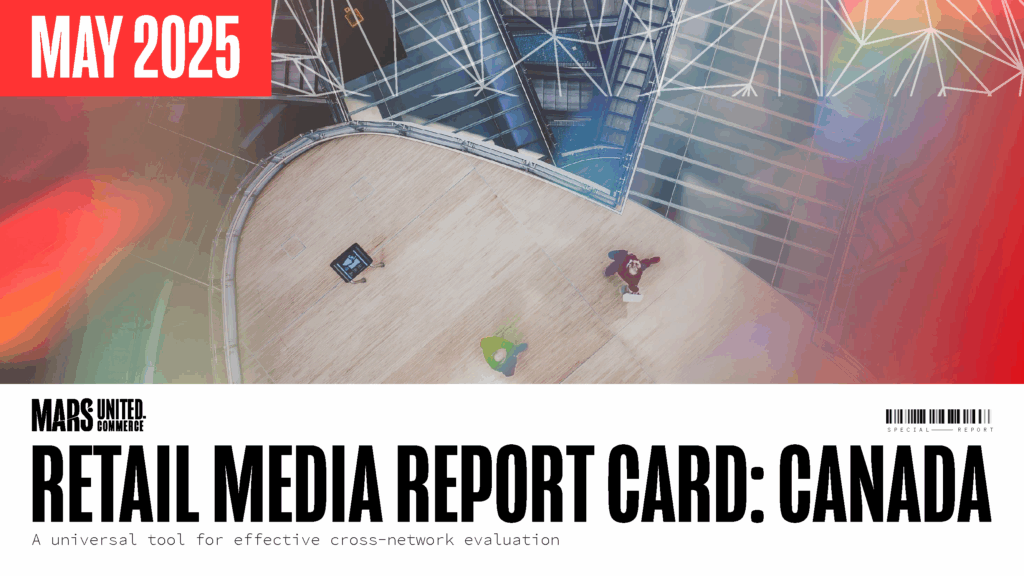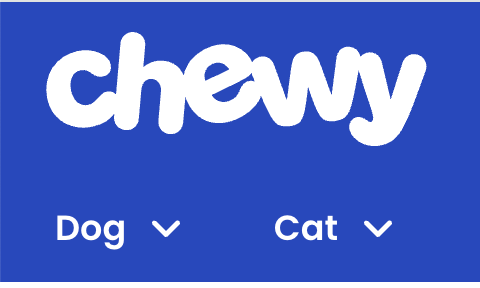An analysis of effective sales enablement tools available to brands on leading ecommerce websites
To help brands better understand the key content opportunities available on leading ecommerce websites, Mars UnitedSM Commerce this year began sharing the Digital Shelf Report, a cross-retailer assessment guide for brand success.
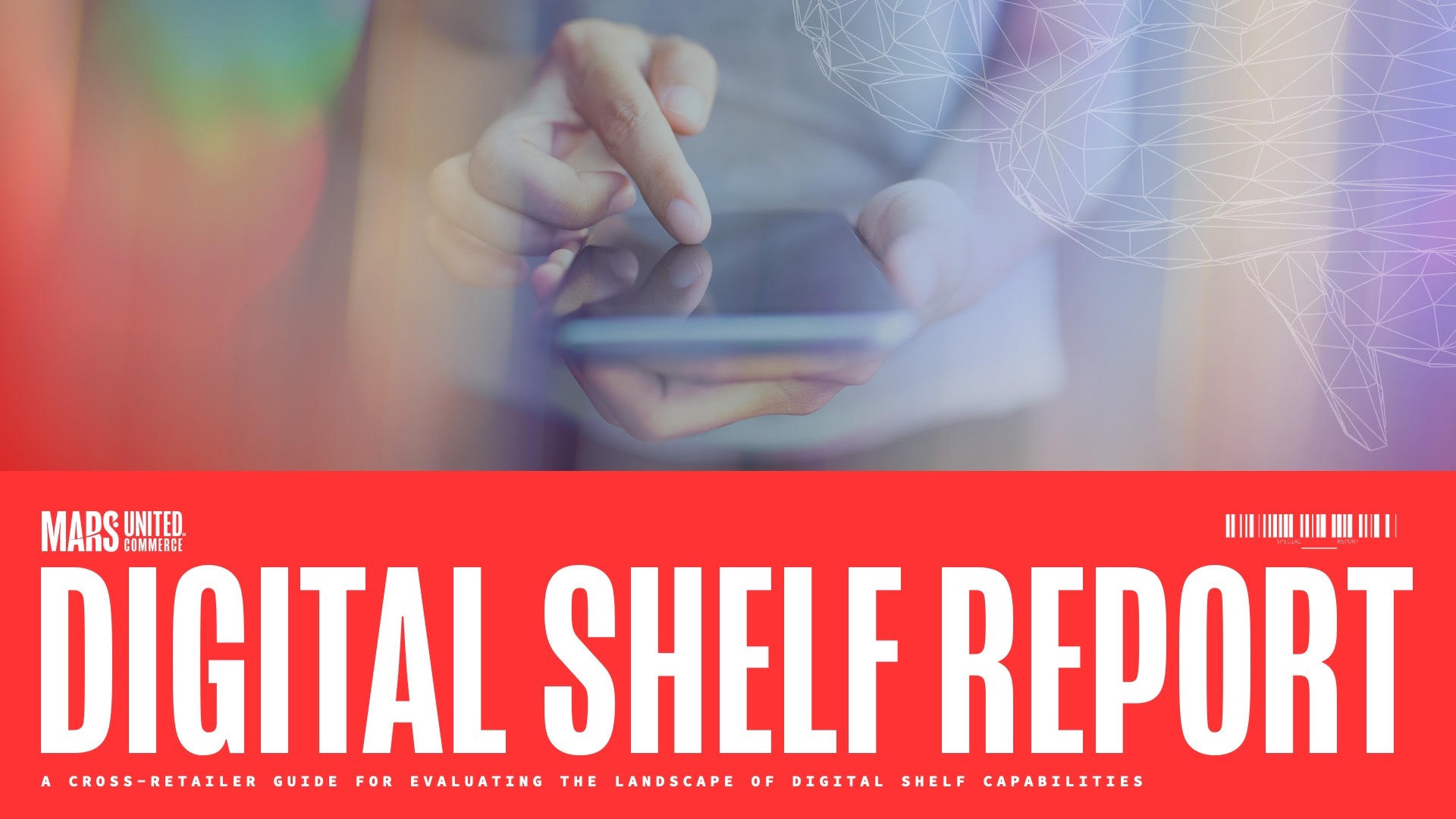
Included in the report is an assessment of 13 key Sales Tools, engagement levers that, if utilized (or earned), can amplify the discoverability, shoppability, and convertibility of products sold on the digital shelf.
The following article examines one of those tools: AR/VR, or augmented reality/virtual for anyone who’s been living under an IRL rock for the last 10 years. AR/VR tools are currently available to brands on three of the ecommerce websites tracked in the report: Amazon, Target and Walmart.
Augmented and virtual reality tools have become helpful in creating immersive and interactive shopping experiences that engage shoppers and influence purchase. A recent survey from NielsenIQ found that 56% of shoppers feel that AR gives them greater confidence about product quality and 61% say they prefer to shop at retailers that offer AR experiences.
Various AR/VR tools have been used by brands and retailers for a number of years to enhance the act of shopping itself by facilitating virtual try-ons for cosmetics, apparel, eyewear and other categories where visualization is important for deciding what product and which variation to buy — bringing the in-store shopping experience into the home (or anywhere else, for that matter).
These tools are also employed to bring the brand experience to life or simply provide entertainment that can drive awareness, affinity and even loyalty among consumers. More recently, the ability to connect directly to a purchase mechanism has also become a standard part of activations, with some retailers even starting to build out virtual shopping environments.
Here are a several examples from the work Mars UnitedSM Commerce is doing with our clients:
Saputo Cheese Treasure Cave
BlueTriton Origin’s Mixologist
STARBURST® Juicyverse
Goldfish Feeding Imagination
San Pellegrino Virtual Bartender
AR/VR tools are now being used by some of the leading ecommerce retailers tracked in the Digital Shelf Report to help brands better engage shoppers and improve conversion rates.
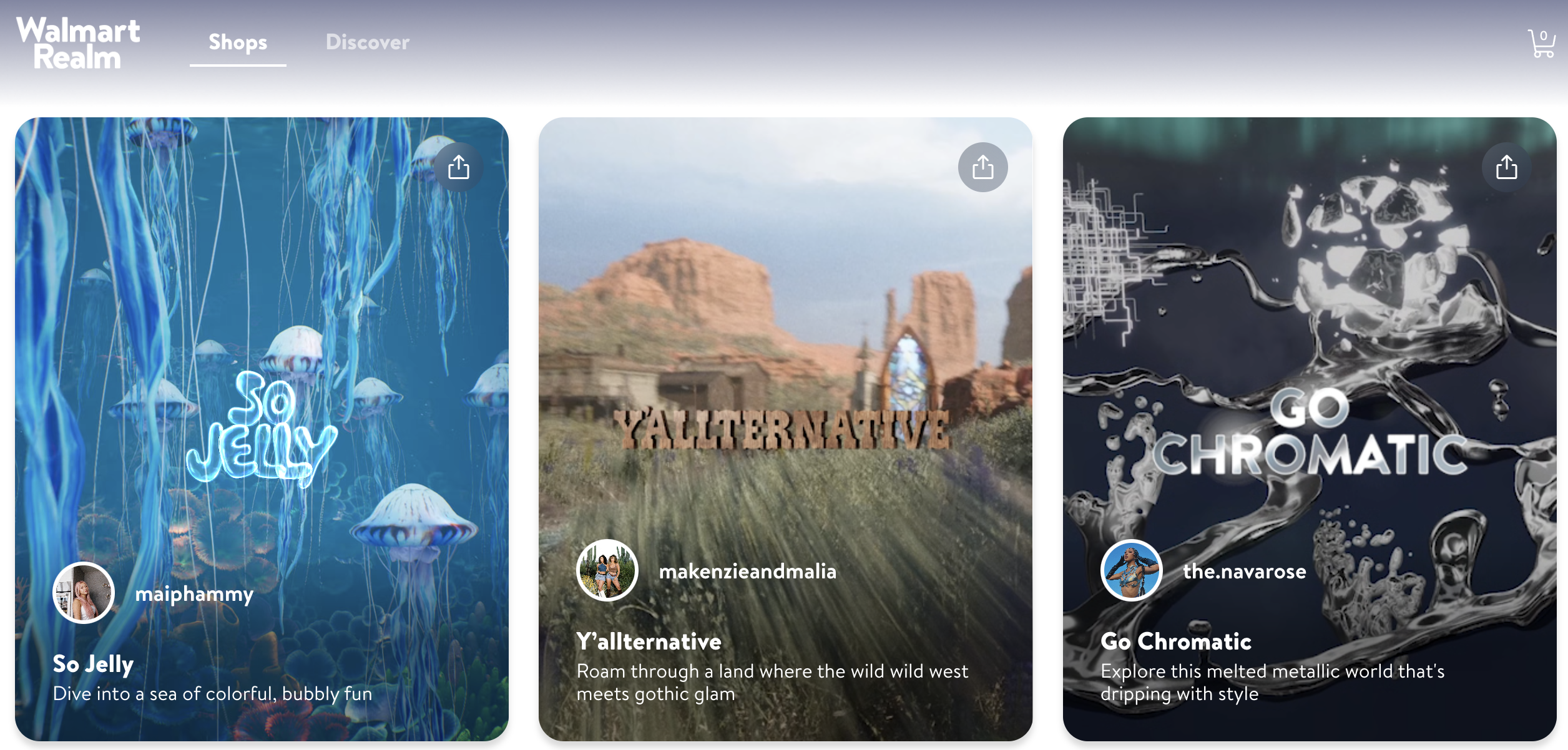
WALMART
In May, Walmart launched Realm, a virtual shopping experience hosted on a dedicated website that the retailer hails as the “next generation of immersive shopping” and an innovation that’s “reshaping the retail landscape.” The concept was developed through insights from Pinterest Predicts, a trend forecasting report that compiles data from multiple sources to anticipate topics that will go viral in the coming year.
Aimed at attracting younger shoppers (Generations Z and Alpha) by delivering more of a social media experience and shortening the distance between inspiration and purchase. Realm launched with three virtual storefronts hosted by social influencers who are embedded in immersive, Disneyesque virtual worlds complete with avatars and funky background music. Visitors to those environments could buy fashion and beauty products showcased by the influencers through direct links to Walmart.com. They also could play games and collect “Walmart Sparks,” digital rewards that deliver purchase discounts.
Realm has already expanded to eight storefronts that have broadened the scope to consumer electronics, home furnishings, and other product categories. Walmart is trying to present a shopping experience different from the ones it already offers in-store and online to attract these younger audiences. It’s part of the retailer’s ongoing trial-and-error approach to reaching these shoppers through new technologies, which has also included multiple partnerships with popular Metaverse gaming site Roblox.
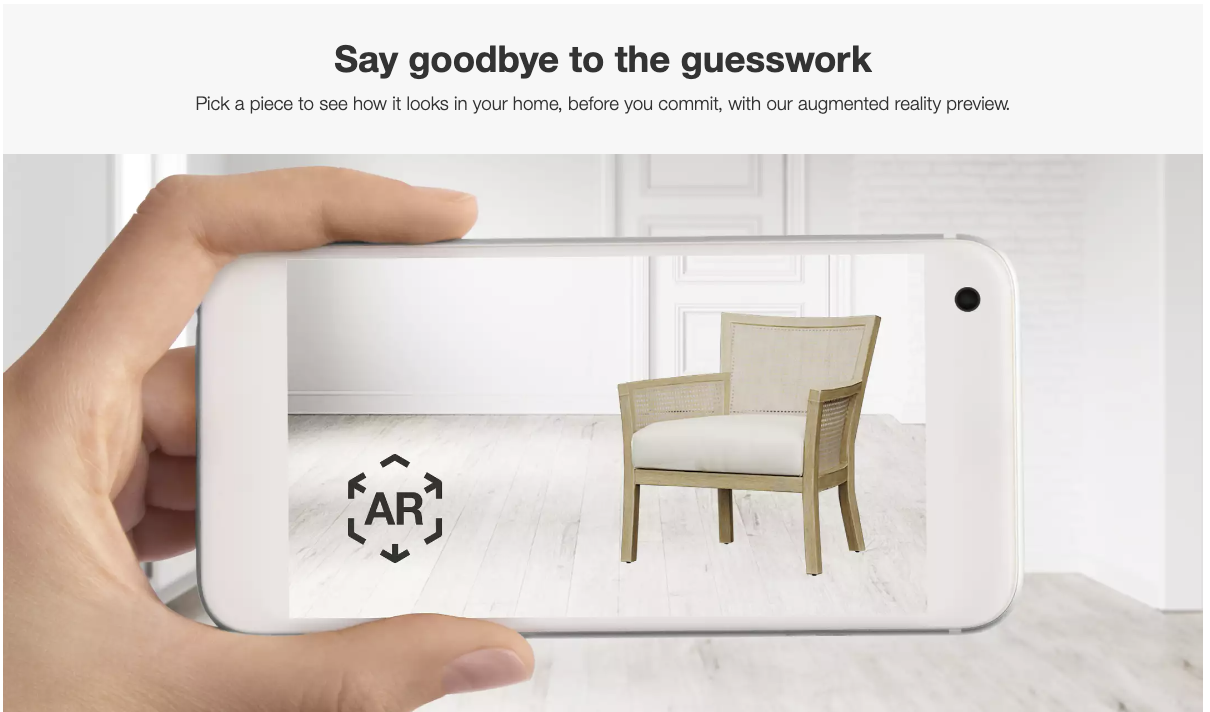
TARGET
“See It in Your Space” and “Try It On” features in the retailer’s app offer AR functionality that’s been around for some time. Using their smartphone cameras, shoppers can add select furniture and furnishings to the rooms in their home to see how they’ll look; mix and match various pieces, colors and designs to find the right ensemble; and even provide room dimensions to make sure the items will fit. To use the feature, shoppers can type “See It in Your Space” into the app’s search bar or click AR icons that accompany participating items throughout the site.
For beauty items like hair and lip coloring, shoppers can “try on” the product to see how it looks, similar to the way AR filters in social media recognize and alter facial features.
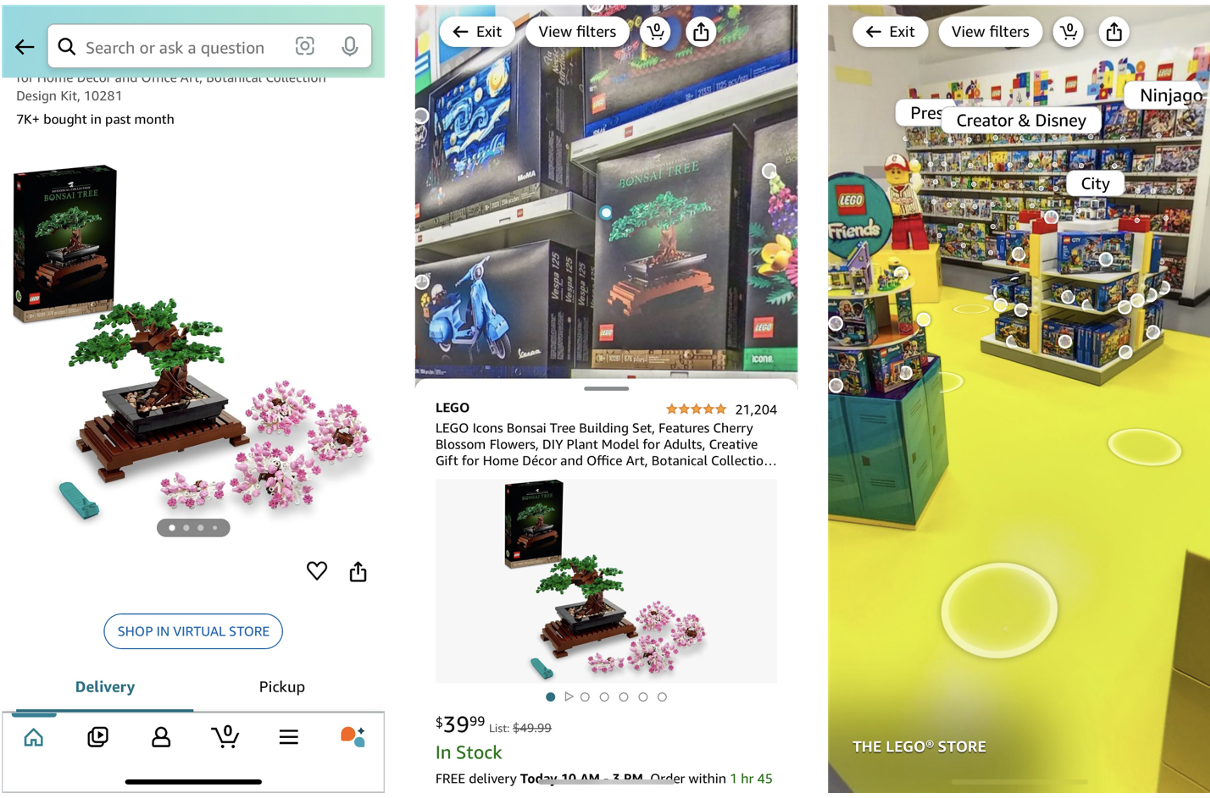
AMAZON
To create new shopping experiences on the digital shelf, Amazon is experimenting with virtual storefronts that are accessible from product detail pages. Early adopters have included Breville, Lego, and Samsung. These virtual stores are part of Amazon’s ongoing efforts to enhance the digital shopping experience, grow customer engagement and drive brand equity and loyalty by showcasing a range of products to encourage cross-shopping and basket-building. [KW1]
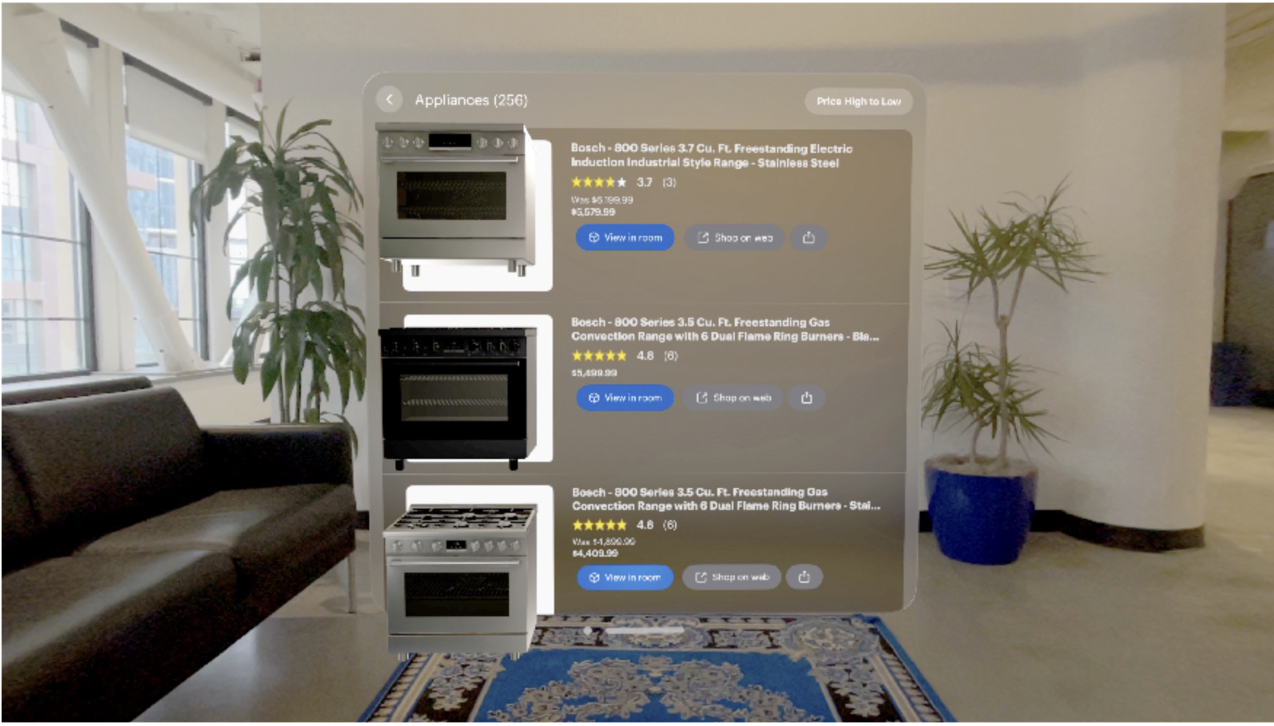
BEST BUY
Our final example comes from Best Buy, although the technology isn’t yet available for brand collaboration (and so isn’t covered in our Digital Shelf Report assessment).
Best Buy recently joined several other retailers in releasing an AR app for the Apple Vision Pro virtual reality headset. Similar to Target’s See It in Your Space tool, the app is designed to help shoppers plan home setups — in this case for technology products. Using the headset, they can add 3D images of various products to their rooms to visualize how they’ll look together and separately. Shoppers also can open product pages on BestBuy.com to get pricing information and customer reviews, as well as send the items directly to friends via text or email. And, naturally, they can make direct purchases, too.
Other retailers that have rolled out Vision Pro apps include Lowe’s Home Improvement, which lets shoppers choose from preset appliance and fixture designs produced by stylists to create custom looks for their own kitchens. And furniture chain Wayfair has a “Decorify” app that lets shoppers upload photos from the home to redecorate with various styles.
The information provided in the Digital Shelf Report only scratches the surface of the ecommerce guidance Mars United deliver to our clients. Optimizing the digital shelf demands a blend of art and science in which brands must appeal to shopper preferences while simultaneously adhering to the retailer’s content criteria — using a mixture of deep shopper insights, extensive retailer intelligence, and ecommerce expertise for which Mars United is uniquely suited to provide. If you’d like to learn more, contact Kristin Wall, VP-Ecommerce, at wallk@marsunited.com.

